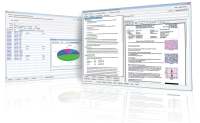
This is a year when we celebrate some remarkable golden anniversaries: discovering the structure of DNA, solving the phase problem in hemoglobin, patenting the Coulter Counter — and conquering Mt. Everest. In recognizing these milestones, we have the opportunity to reflect on ourselves as fortunate and ingenious heirs, propelling forward the pioneering achievements of 1953. At the same time, we are challenged to take a harder look at some of the shortfalls that come along with our human nature, with an eye toward realizing the full potential of our scientific discoveries and our drive to stand on top of nature’s highest peaks. It takes a team approach to summit a great mountain, and a commitment to translating scientific discoveries into public health strategies to advance the well being of a nation.
Fifty years after the world first learned about DNA, we have the first diagnostic tests and targeted drug therapies emerging from genomic studies of the uniquely family-linked population of Iceland, and the promise of the largest and most diverse gene survey yet undertaken to begin this year in the United Kingdom (see News Digest, page 10). But here in the U.S., we have yet to legally assure ourselves that predictive genetic information will be used only to the individual good, and not as a means to discriminate against us when we seek insurance or employment. Although comprehensive legislation has been introduced, Congress has not yet acted.
Whether our family legacies started us off with advantages or disadvantages, we have made great medical strides in our ability to manage elevated cholesterol, blood pressure, and blood sugar. Unfortunately, the prevention messages and the available treatments are not yet reaching our most vulnerable groups (see News Digest, page 12). And worse, our rates of obesity and diabetes are rising out of control, and every day we add approximately 3,000 kids under the age of 18 to the risk pool of smokers.
After lung cancer, our second greatest cancer killer is colorectal, a disease that, like obesity and diabetes, shares ominous links to a westernized diet and lifestyle (see Disease Management, page 18). We do have effective screening methods already available, and new DNA-based tests almost ready for use. Screening for colorectal cancer has proven among the most valuable and cost-effective prevention tools in our arsenal, yet fewer than half of eligible adults have had the appropriate tests. In publishing the newest screening recommendations of the U.S. Preventive Services Task Force (USPSTF) in the February 2002 issue of Gastroenterology, the journal of the American Gastroenterology Association, authors point out that improvement in screening depends not on the tests alone, but on physicians’ behaviors, insurance coverage and a surveillance reminder system. All of these improvements are more difficult to achieve in a fractured health care system.
The new recommendations explicitly seek to address a balance in the allocation of resources between test methods for screening and surveillance based on scientific research findings. Using evidence-based guidelines for cancer-screening benefits is a major point of intersection between medical and social interests. It may seem noble for a politician to champion maximum screenings, but in fact it has been pointed out that a less than optimal use of resources only serves to widen the gap in access between the insured and the uninsured.
This year, Tsering Gyaltsen Sherpa will open an Internet café at the Everest base camp. He is the grandson of the mountaineer Sherpa Tensing who made the first ascent of Mt. Everest with Sir Edmund Hillary. Proceeds from the café will go toward purchasing equipment for the team of climbers that annually clears Mt. Everest of rubbish left behind by expeditions.
Ellen Blaine
Editor



